

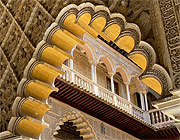
The Seville Real Alcazar rivals the Alhambra in Granada for Moorish courtyards and fabulous Mudejar architectural decoration.
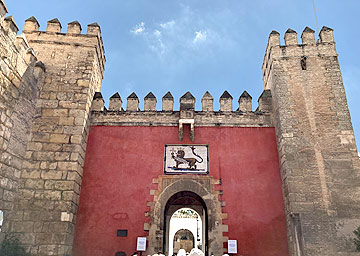
This fabulous Royal Palace grew from the original tenth century Moorish fort. The 11th century Abbadid rulers enlarged the fort and added the palace known as Al-Muwarak (the Blessed), now the western part of the Alcazar. The 12th century Almohad rulers added their own palace east of this, around Patio del Crucero, which was later mostly replaced by Alfonso X with a Gothic palace
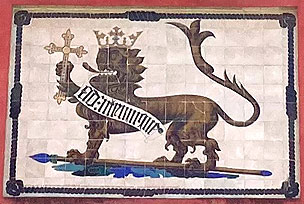
Finally, Pedro the Cruel of Castile created his stunning masterpiece of Mudejar architecture in the fourteenth century, Don Pedro's Palace. As the Michelin Guide points out, the exuberant adoption of the Mudejar style shows how taken the Christian city was with the Arabian architectural decoration.
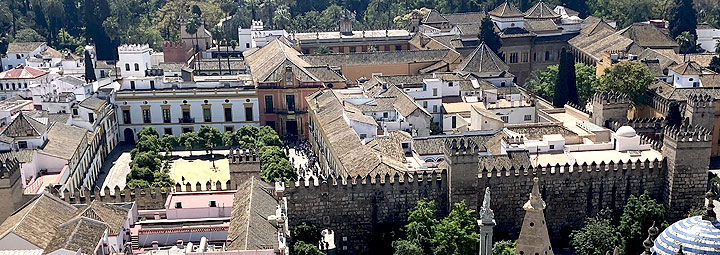
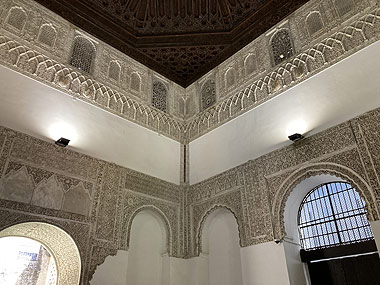
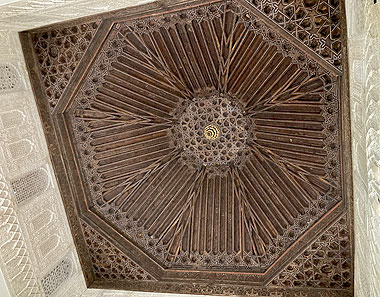
Through the Puerta del Leon (Lion Gate) the Patio del Leon was once the garrison yard of the Al-Muwarak palace. A side door leads into the 14th century Sala de la Justicia, created by the Christian King Alfonso XI. It is decorated in sumptuous Mudejar style with panels of intricately carved plaster work.
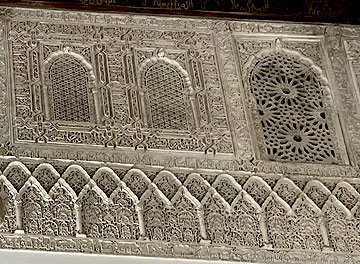
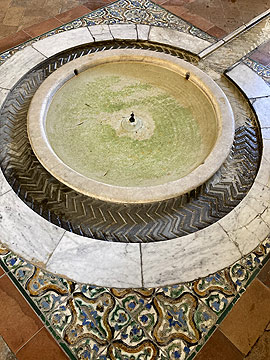
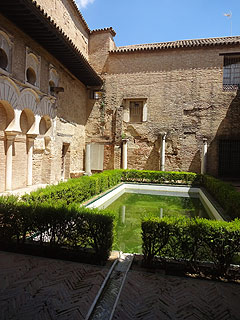
Through the Hall is the 12th century Patio del Yeso, part of the Almohad palace. A lovely Moorish garden, enclosed within four walls, with a hedged lily pond.
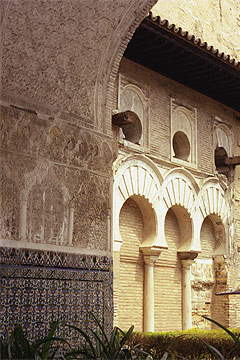
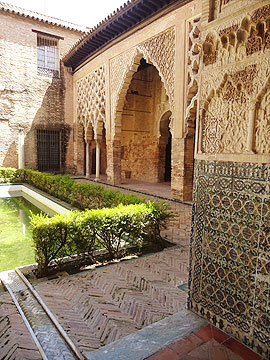
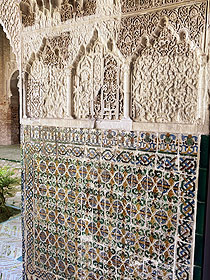
Back to the Patio del Leon and into the Patio de la Montera. This was the place where the Royal court met before embarking on a hunt. Within it is the fine Mudejar facade of Don Pedro's Palace.
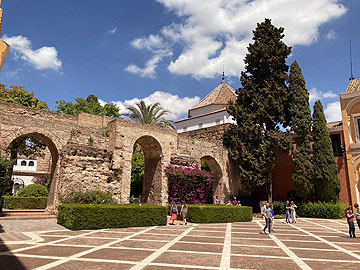
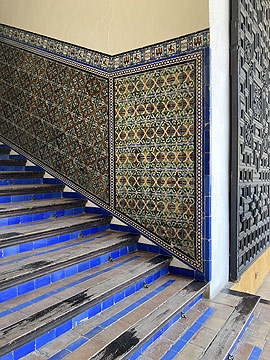
Pedro had a long alliance with the Muslim emir of Granada, Mohammed V who was responsible for much of the decoration of the Alhambra. When Pedro decided to build his new palace in 1364, Mohammed sent many of his top craftsmen to work alongside others from Seville and Toledo to create this supremely beautiful fusion of Islamic and Christian artistic traditions.
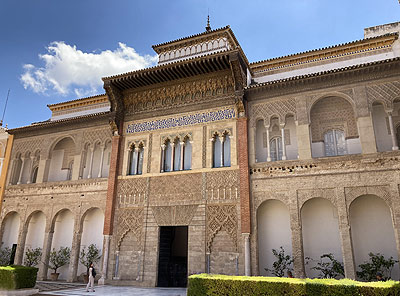
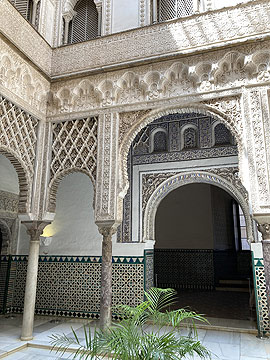
Inside Don Pedro's Palace, Patio de las Doncellas is surrounded by fabulous rooms, and a smaller patio, Patio de las Munecas, lies at its south west corner.
The Patio de las Munecas (Patio of the Dolls) is so named, apparently, for the dolls' heads carved into one of the arches.
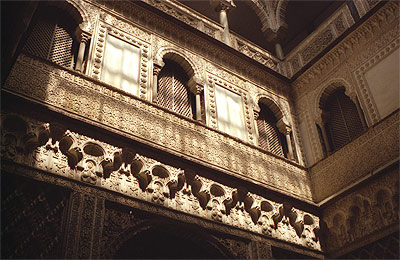
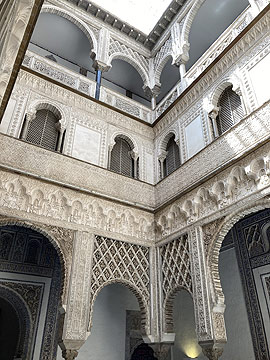
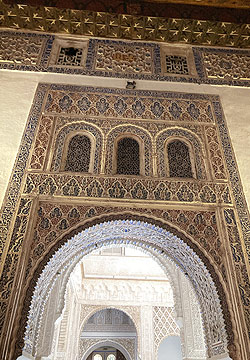
All of the rooms around the much larger Patio de las Doncellas can be accessed directly from it, including Sala de los Pasos Perdidos (Hall of the Lost Steps), on the west side of Patio de las Munecas.
Patio de las Doncellas (Patio of the Maidens) is exquisite and was the centre of Don Pedro's palace. The sunken garden was uncovered by archaeologists in 2004, having lain beneath a marble floor for 500 years.
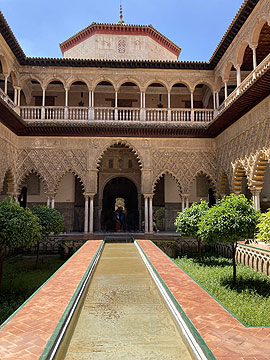
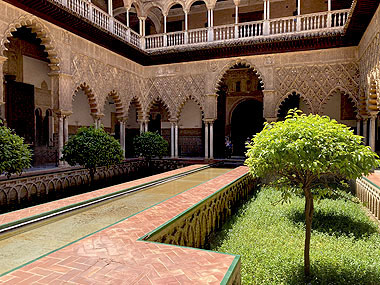
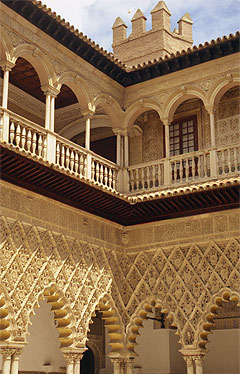
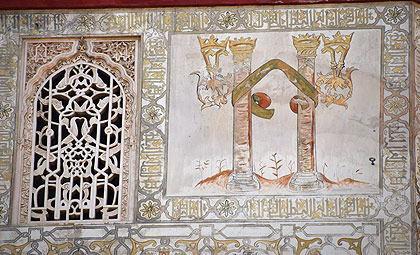
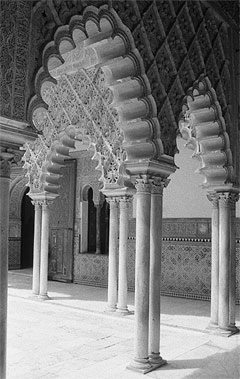
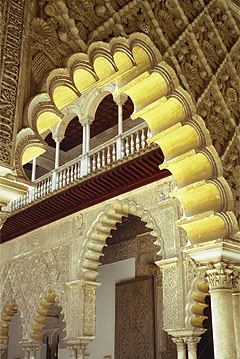
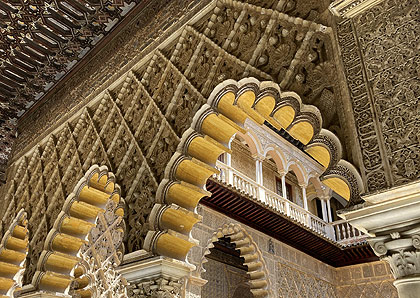
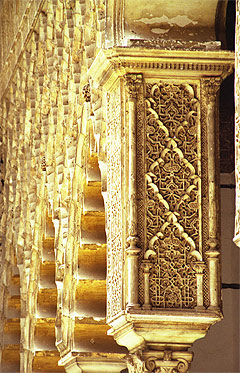
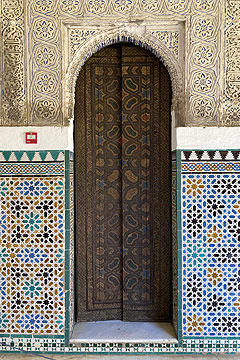
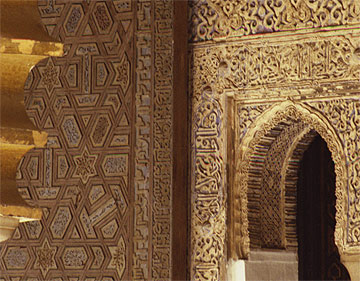
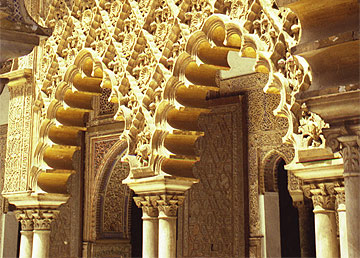
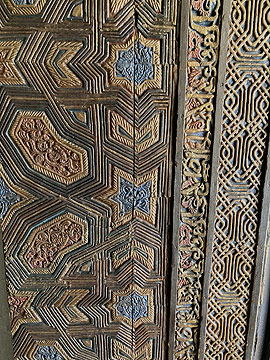
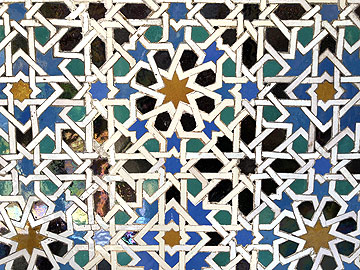
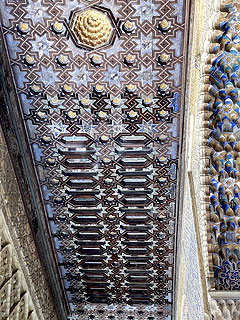
The ceilings, tiled walls and carved wood doors are in a multitude of different patterns.
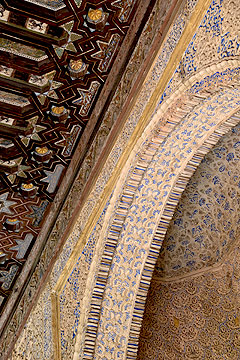
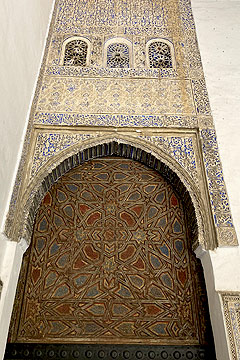
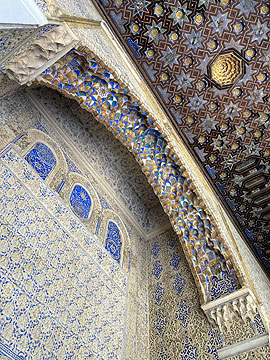
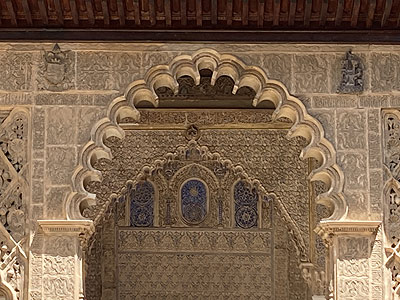
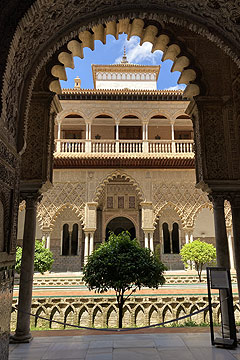
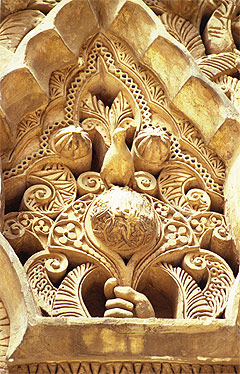
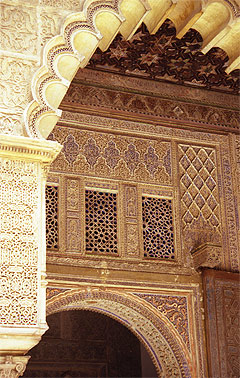
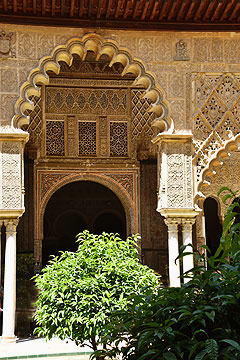
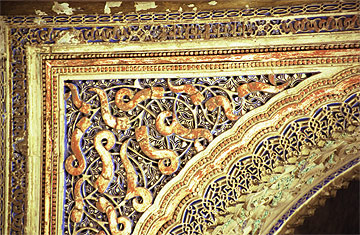
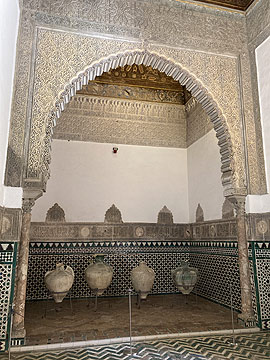
Alcoba Real, north of Sala de los Pasos Perdidos, takes up most of the west side of Patio de las Doncellas .
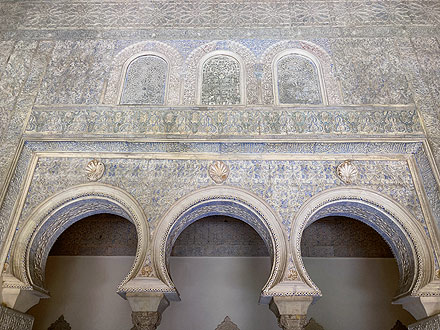
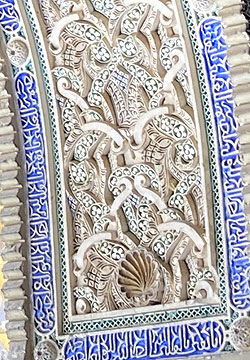
This beautiful long room, the royal bedroom, is flanked by alcoves, with a large chamber directly opposite the entrance from the patio which has a beautiful triple horseshoe arch separating it from the larger room.
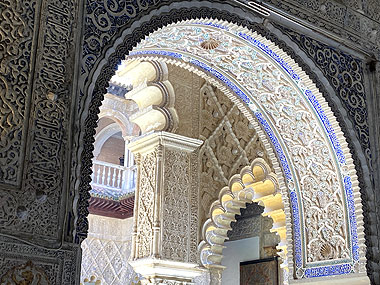
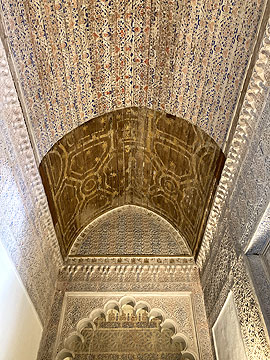

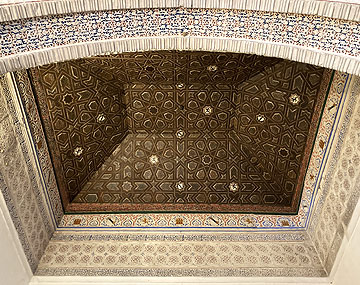
Across from the Alcoba Real, on the east side of Patio de las Doncellas, is the Salon del Techo de Carlos V - the Room of the Roof of Charles V. It is named for the dark timber coffered ceiling installed in the mid 16th century by Emperor Charles V (Charles I of Spain). Charles I of Spain was one of the most powerful Spanish monarchs, he ruled from 1515 to 1556 during the age when Spanish explorers ruthlessly conquered the Aztecs and Incas, stealing huge amounts of gold and other precious goods. As the crown was entitled to one fifth of their vast treasure it became very rich. He became Holy Roman Emperor Charles V in 1519 and ruled over vast swathes of Europe. This room was once the chapel of the palace of Don Pedro I.
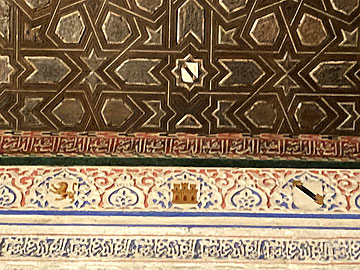
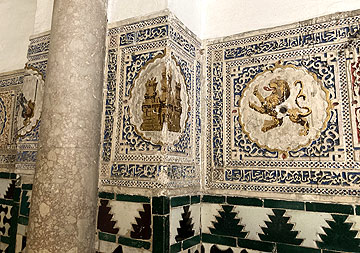
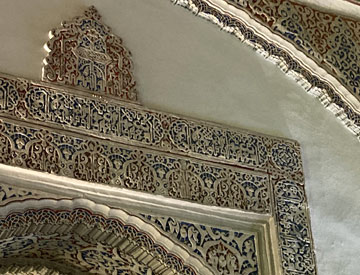
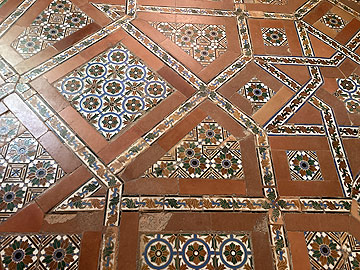
It is actually three rooms, the central being the largest, connected by arches. The north chamber has a Mudejar coffered ceiling with heraldic symbols of Leon and Castile - the lion and castle. The central long chamber has the Renaissance coffered ceiling (which I'm not ken on!) and the southern chamber has a most beautiful decorated timber ceiling and patterned, tiled floor.
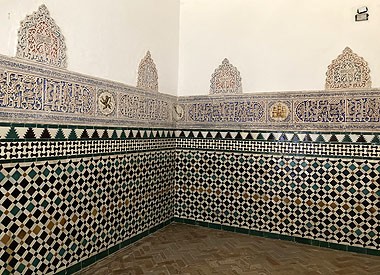
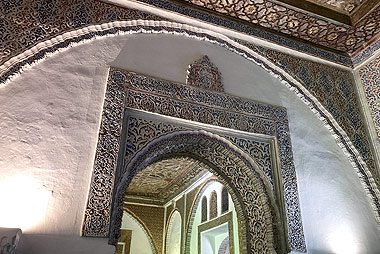
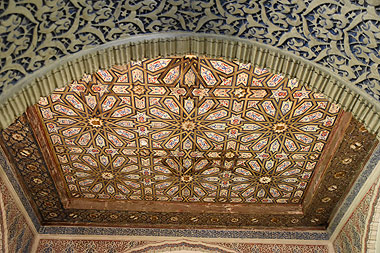
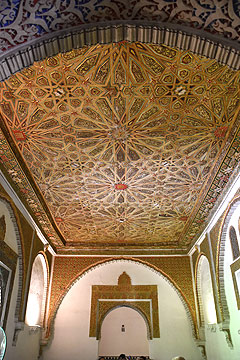
South from the Salon del Techo de Carlos V, on the south east corner of Patio de las Doncellas, is the rectangular Sala de los Infantes or Children's Room. This rectangular room has a very beautiful ceiling and tiled floor.
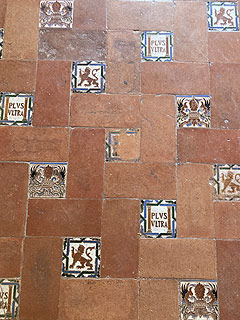
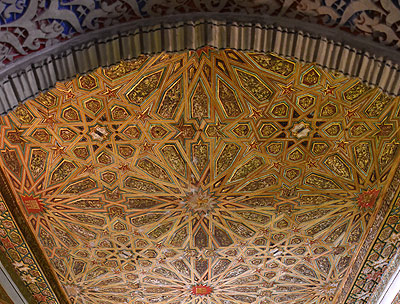
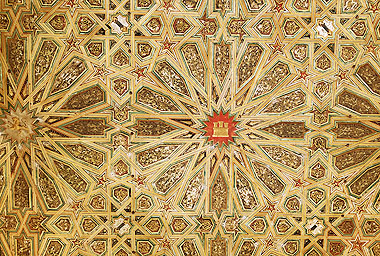
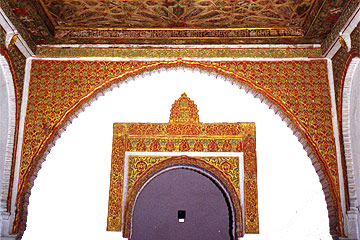
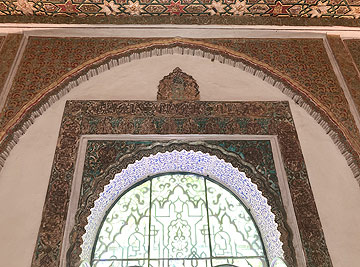
The Salon de los Embajadores (Ambassadors' Room) also known as Salon de Trono (Throne Room) stretches along the south side of Patio de las Doncellas. It is composed of three chambers, the central being the largest and sumptuously decorated, every inch of the walls covered with colourful and intricate plaster work, topped by a magnificent dome.
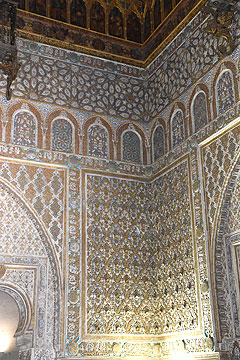
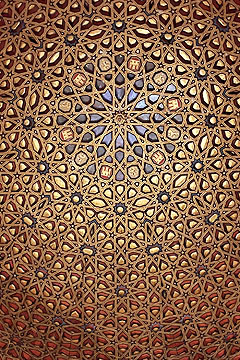
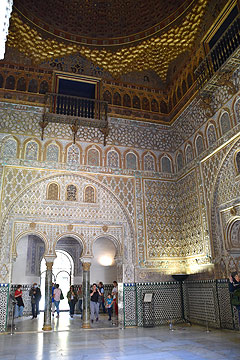
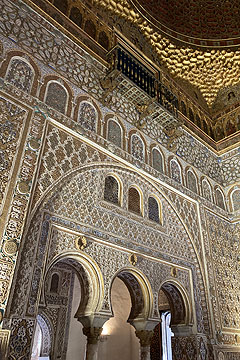
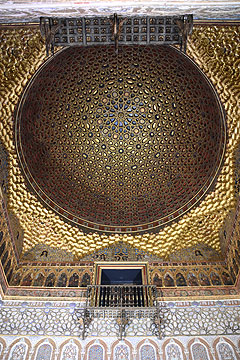
This room was originally Pedro the First's throne room.
The dome, from 1427, is in the shape of a half orange and the room is sometimes called Sala de la Media Aranja (Hall of the Half Orange).
There is a balcony in the upper level of each of the four walls, and on the same level are 56 paintings on wood of monarchs from Chindasvinto to Felipe III, each holding a sword in the right hand and an orb in the left.
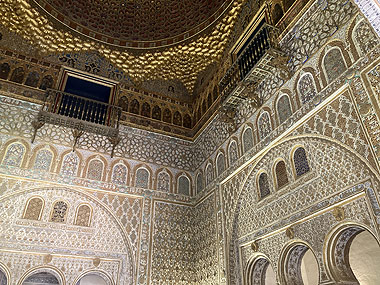
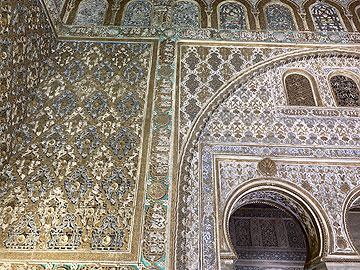
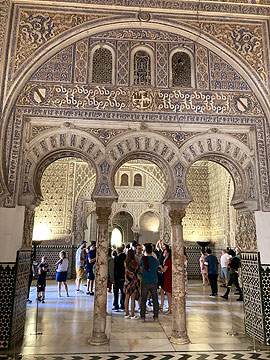
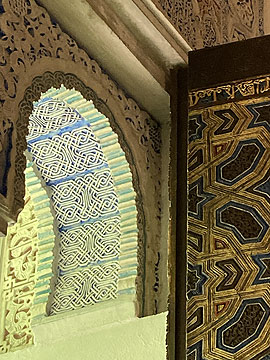
South of the Salon de los Embajadores is the Salón del Techo de Felipe II. The triple horseshoe arch between the two is magnificent, known as Arco de los Pavones for the peacocks in its upper quadrants.
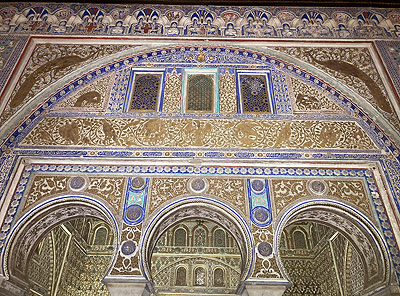
Salón del Techo de Felipe II is named for its coffered Renaissance ceiling.
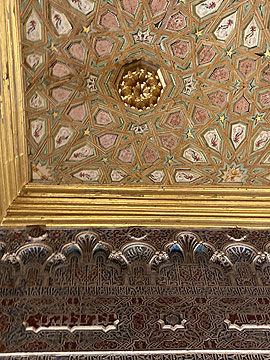
Just west of this complex of rooms surrounding Patio de las Doncellas is the Cuarto del Principe, the Prince's Quarters, has chambers at each end, the Queen's Bedroom to the north and the Prince's Bedroom to the south with access to the gardens
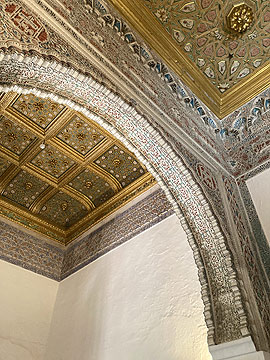
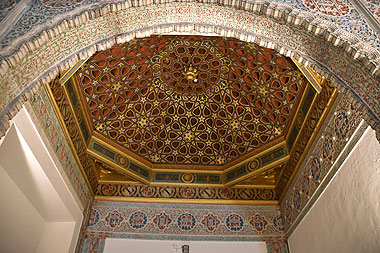
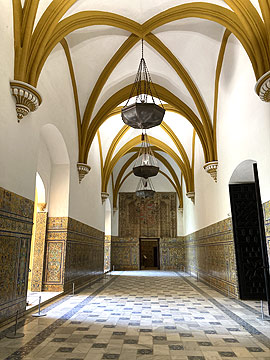
Adjacent to Don Pedro's Palace, on the north side, is the Gothic palace of Alfonso X (1252-1284), though it has been much altered through the age,particularly by Carlos I (Holy Roman Emperor Carlos V).
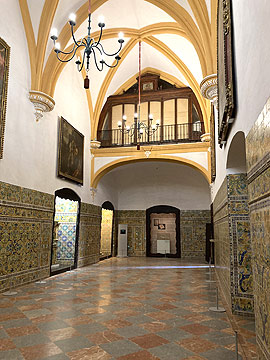
The Great Hall of the palace was decorated with colourful tiles to a height of around 2 meters for the wedding of Carlos I to Isabel of Portugal.
Next to the Great hall is the Tapestry Hall with a series of enormous tapestries on the theme of Charles I's conquest of Tunis.
The two halls are the same length and at one end there is access to a chapel which stretches across the width of both.
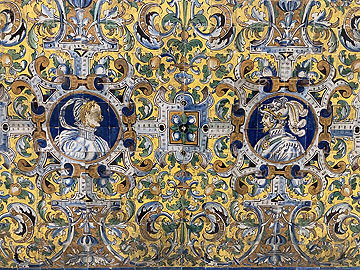
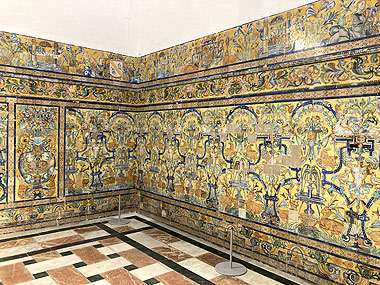
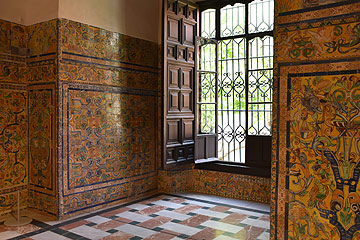
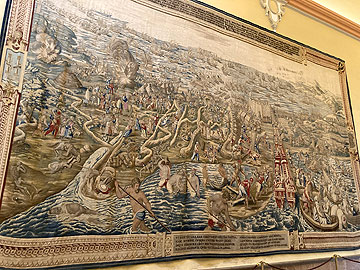
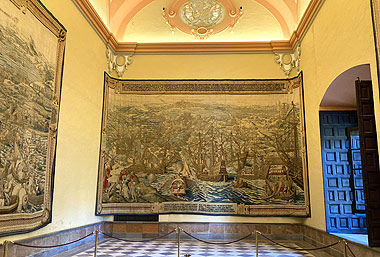
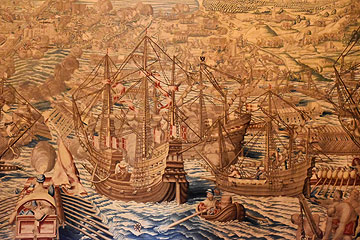
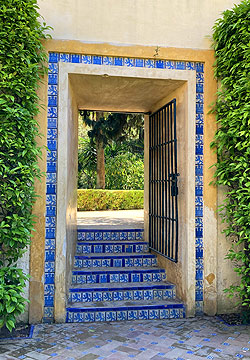
The gardens of the Alcazar are extensive. Several small, quite formal gardens are overlooked directly by rooms of Don Pedro's Palace. Larger Jardin de la Danza is adjacent to the Gothic Palace on its east side with further smallish gardens on the north side of the Gothic Palace.
Extending outwards from these are vast gardens which have been created where there used to be orchards.
We explored only a fraction of these gardens, they would take a good few hours to cover completely.
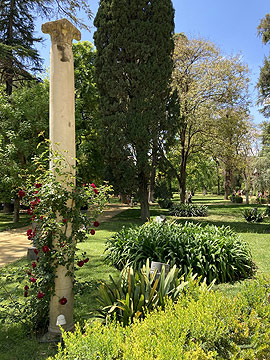
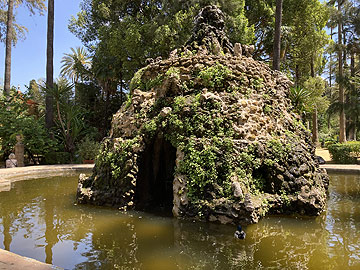
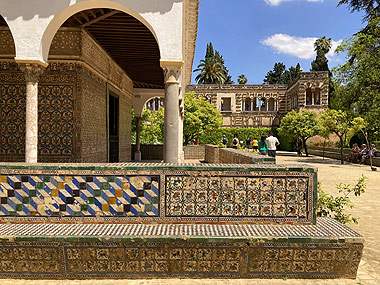
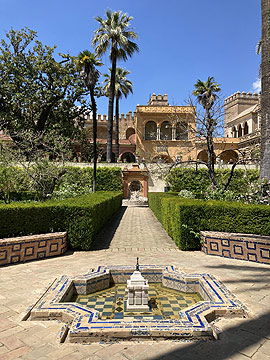
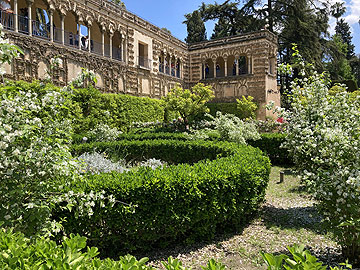
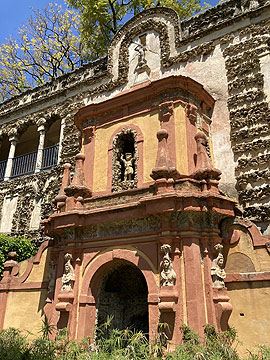
A long wall of galleries stretches east from the north end of the Gothic Palace. This is the Galería de los Grutescos dating from the 16th century but based on an old wall from the Islamic era.
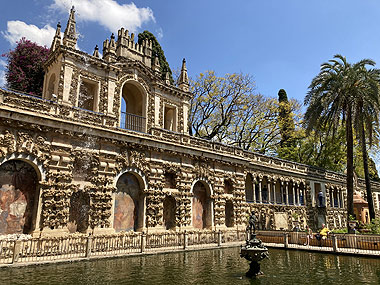
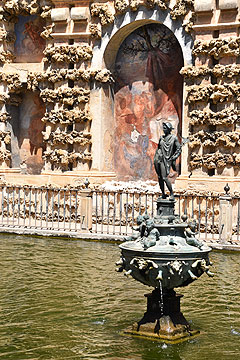
In the centre of the wall is the Fuente de la Fama, a 17th century hydraulic organ, one of only four left in the world. During the day, on the hour, music is played created by water pressure in the pipes of the organ.
At the west end of the Galería de los Grutescos, adjacent to the Gothic Palace, is the Estanque de Mercurio (Mercury Pond), named for the small statue of Mercury on a fountain at its centre.
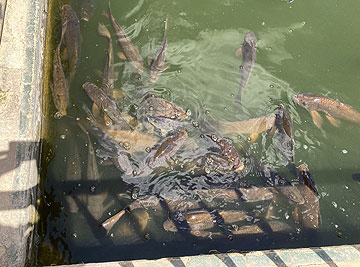
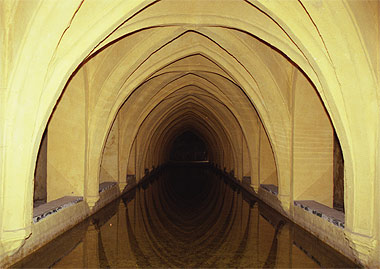
Beneath the Patio del Crucero (Patio of the Cross, on the north east corner of Patio de la Montera next to the Gothic Palace, entrance Jardin de la Danza) are the Baños de Doña Maria de Padilla - a beautiful but eery place and very cool! Doña Maria was said to have been pursued by Pedro the Cruel, most persistently after her husband died, until finally, to rid herself of his advances, she disfigured her face with boiling oil.
Legend has it that these were her baths, but in fact this is a 12th century water cistern.